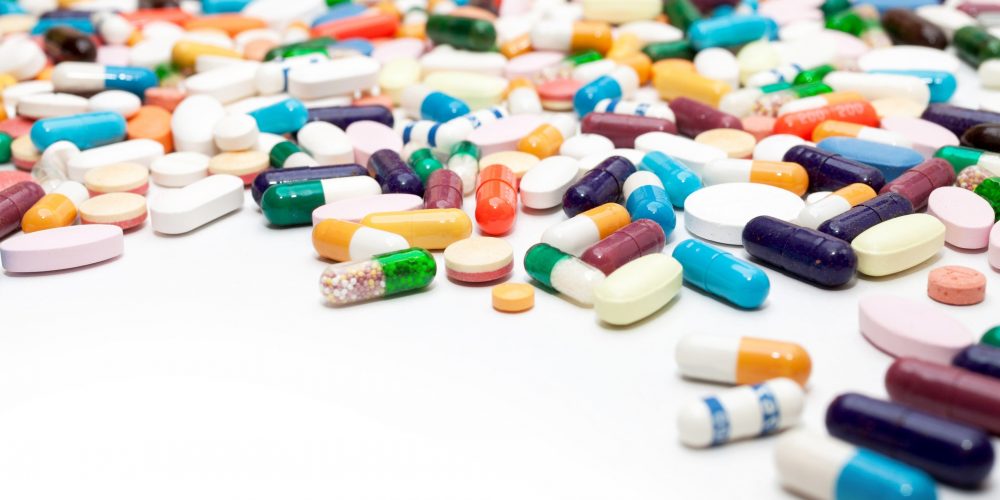How they’re different from brand-name drugs
Chances are, if you’ve ever had a prescription filled at a pharmacy, you’ve probably consumed a generic drug. Nearly 9 out of 10 prescriptions filled in the U.S. today are generic drugs, according to the Food and Drug Administration.
Yet many people feel confused about what they are, where they come from and when they’re appropriate to use. Director of Pharmacy Mandy Leonard, PharmD, BCPS, addresses some common questions and misconceptions about generic medications to help you stay informed.
What’s the difference between generic and brand-name drugs?
When a pharmaceutical company first develops a new medicine and brings it to the market, the FDA allows that company to be the exclusive maker and seller of that drug for a set period of time. This gives the company the opportunity to recoup the money it spent developing and marketing the drug without any competition.
Once that time period expires, though, other drug companies can bring copycat versions of that drug (generics) to the market.
Generic drugs must be approved by the FDA before they can be made available to patients in the U.S., but they go through a different approval process than the original brand-name drugs.
How do we know that generic drugs are safe?
To get FDA approval, a company making a generic drug must show that its version is the same as the brand-name drug in several ways:
- active ingredient(s)
- form
- what it’s used for
- how it’s taken
- how it’s absorbed in the body
- how long it lasts on the shelf
A generic drug can be different from its brand-name counterpart in ways that don’t affect how it actually works – for example, the pill can be a different color or shape. But the company that makes the generic drug must also show the FDA that the inactive ingredients it uses are safe, and that it makes the drug using current good manufacturing practices (CGMPs).
By doing all of these things, the generic drug company demonstrates to the FDA that its version is “bioequivalent” to the brand-name drug. If it does that, it does not have to repeat costly and time-consuming clinical trials done by the brand-name drug maker to show that the drug is safe and effective.
Once a generic drug is approved and becomes available, the FDA continues to monitor it (as it also does with brand-name drugs). The FDA periodically does inspections of manufacturing plants where the drugs are made to ensure that CGMPs are being followed.
The generic drug company is also required to tell the FDA if any serious side effects or dangerous reactions to its drugs are reported by consumers.
Are generic drugs cheaper because they are lower quality?
Just because they cost less does not necessarily mean that generic drugs are lower quality. Companies can charge less for them because they do not have to spend millions of dollars performing clinical trials and marketing new drugs, like the original maker of the brand-name drug did.
Generics also create competition in the marketplace, which can drive down prices even further.
Many drug companies, both brand-name and generic, source ingredients from or manufacture their products abroad. Those manufacturing plants still must meet CGMPs, although one of the regulatory challenges for the FDA is keeping up with surveillance inspections of all of those manufacturing plants.
If I’m admitted to the hospital, will I get brand-name or generic medicines?
There are generic version of many drugs available to patients today, but each hospital or health system has its own process to evaluate and decide which medicines it will offer.
For example, just because a generic medicine is approved by the FDA doesn’t mean that we will carry it here at Cleveland Clinic. We have a specific review and approval process for medications, where a panel of experts evaluates how safe, effective and cost effective they are.
We also have a list of manufacturers that we do not order from, because we know they have had quality or recall problems in the past and we have decided it is not worth the risk to offer them, even if they are the cheapest option.
What about when I get my prescriptions filled at the pharmacy?
You can always request brand-name drugs, but be aware that insurance companies often provide better coverage for generics because of their lower cost.
Most states also have laws that allow pharmacists to substitute a less expensive generic drug for a brand-name drug when filling a prescription, unless the doctor specifies to “dispense as written,” or unless it’s a drug that’s considered to have what’s called a “narrow therapeutic window.”
I recommend that people get their prescriptions filled at one pharmacy and develop a relationship with that pharmacist, rather than shopping around to different ones. That way, you can feel comfortable asking questions and having conversations with the pharmacist, and he or she is going to be able to give you good advice.
You can also find label information for every FDA-approved drug at Drugs@FDA.
Source: By FDA


